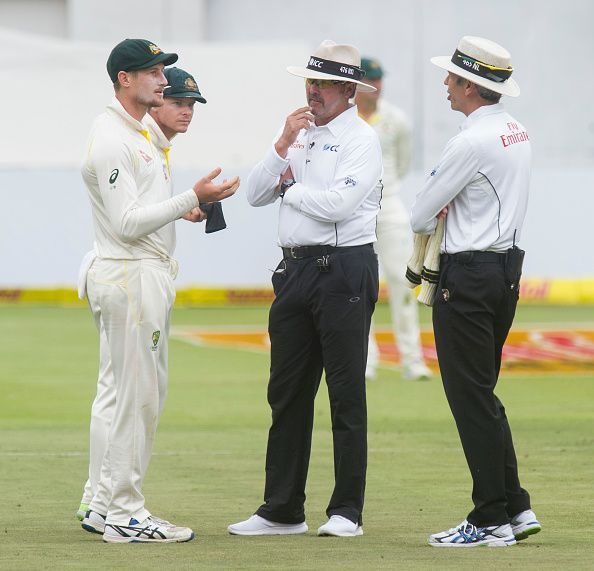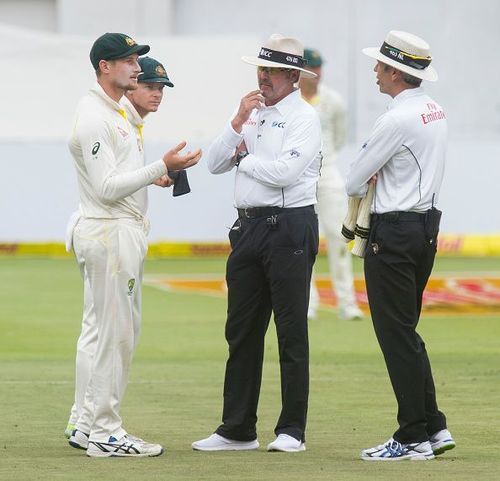
Cricket is still shy about ball-tampering

It has been nine months since Steve Smith, David Warner and Cameron Bancroft were handed hefty bans by Cricket Australia, people lost their jobs over the incident. Some, like Cricket Australia CEO James Sutherland, stepping down, others, like high-performance manager Pat Howard, being sacked. Even the Australian Prime Minister took some time out of his schedule to denounce the incident. The fallout was profound.t's now been over nine months since the infamous ball-tampering scandal in Cape Town, an incident that gripped the cricketing world and threw Australian Cricket into turmoil.
Yet despite the furore around the events in Cape Town, it was by no means the first case of ball-tampering. The incident took place against South Africa, a side who had seen players charged for ball-tampering three times since 2013, their captain the guilty party in two of these occasions.
Faf du Plessis is not alone though. Other celebrated players such as Shahid Afridi and Michael Atherton have similarly been found guilty of ball-tampering. Yet such incidents are merely the tip of the iceberg.
These players have gone to such lengths in the attempt to obtain reverse swing. Reverse swing has not always been part of cricket. The first notable use of it is as recent as 1979 when Sarfraz Nawaz took seven wickets for just one run as Australia capitulated at the MCG.
As reverse swing became more prominent, so did rumours of ball-tampering. Yet rather problematically, the ICC's Law on ball-tampering, that being law 42.3, is notoriously lacking. The laws state that players can "polish the ball provided that no artificial substance is used," "remove mud from the ball under the supervision of the umpire," and "dry the ball with a piece of cloth." However, they also state that "to take any other action whatsoever which is likely to alter the" ball is against the rules.
So when does a players treatment of the ball cross the line and become ball-tampering? Is it when a player has mint or some other sweet in their mouth, like du Plessis in 2016 or Marcus Trescothick in 2005? Is it when a team deliberately throws the ball to the keeper on the bounce in order to roughen it? Is it when a player picks at the seam without the umpire's permission like Peter Siddle in 2012 or Sachin Tendulkar in 2001?
Many cricket fans will have differing opinions on which of these are acceptable and which aren't. If law 42.3 is to adhere to by the letter then none of these should be allowed. But to enforce law 42.3 in such a literal way would be incredibly rigid and would probably make reverse swing an exceptionally rare spectacle.
There has subsequently become a large grey area. Using spit to soften the ball is fine, and using sandpaper to roughen is clearly not, but in-between these to examples are a multitude of ways in which a player can alter the condition of the cricket ball.
At the start of the summer, Tim Paine emphasized the need for Australia to be perfectly clean with the way they manage the ball. They have barely moved the old ball in the Test series against India, having been particularly impotent with it in Melbourne and Sydney. This is also despite having Mitchell Starc who is renown for his ability to reverse the ball. Seeing this as coincidence is naive.
For Australia to arouse any further suspicion would have been detrimental to Australian Cricket. Peter Siddle was eventually cleared for picking the seam in 2012 but had such a thing been discovered by the media this summer, then it would have sparked enormous controversy.
It, therefore, does not take a skeptic to see that Australia have suffered by staying away from the grey areas of ball management. This, in turn, implies that they have exploited these grey areas far more frequently in the past. Right or wrong, this is to be expected in professional sport. Similar grey areas are exploited in sports, such as football, where a player will go to ground easier to get a free-kick, or in Formula One, where each season hundreds of mechanics and engineers pour over the sets of regulations to try and find loopholes they can exploit to gain an advantage with their car's design.
If the players are given room to stretch what the laws allow, then they will. The incident in Cape Town provided cricket with a chance to be frank about ball-tampering. Australia cheated so badly that their tampering could not be ignored, it was no longer an issue of subjectivity. But, this should have been recognized as being endemic of a far wider problem in the game.
While Australia went beyond the ambiguous and into the glaringly obvious, there are still a lot of questionable techniques that are used to alter the condition of the ball on a regular basis. Not to mention other blatant pieces of ball-tampering that are simply better disguised, it can't be that the handful of players that have been charged for ball-tampering are the only ones to have committed it.
Chris Pringle, for example, admitted well after the game in which he took 11/152 against Pakistan took place that he'd used a bottle cap to scratch the ball. How many players have used a similar trick without admitting to it?
Yet, now nine months on and cricket is still shy about the issue. Australia's lack of reverse swing is discussed, but few seem willing to fully attribute it to their ball management. Reverse swing is a much-loved art, but people are still hesitant to talk about why it only emerged after approximately 100 years of Test cricket.
By reducing our view of ball-tampering in cricket to a handful of incidents and putting blame on a few individuals, we overlook the problem of ball-tampering as a whole. The issue of ball-tampering seems too sensitive for cricket to confront head-on. Bancroft has already returned from his ban, and Warner and Smith will return in a few months time, yet the grey areas remain.
There needs to be a clear ruling on what can be done to alter the condition of the ball. If the reverse swing is to continue to remain as prominent as it now is, then the law will have to allow more than saliva and pant shining. Yet, the rules can't be revised adequately without the frank admission that players are commonly exploiting the current shortcomings of the law.